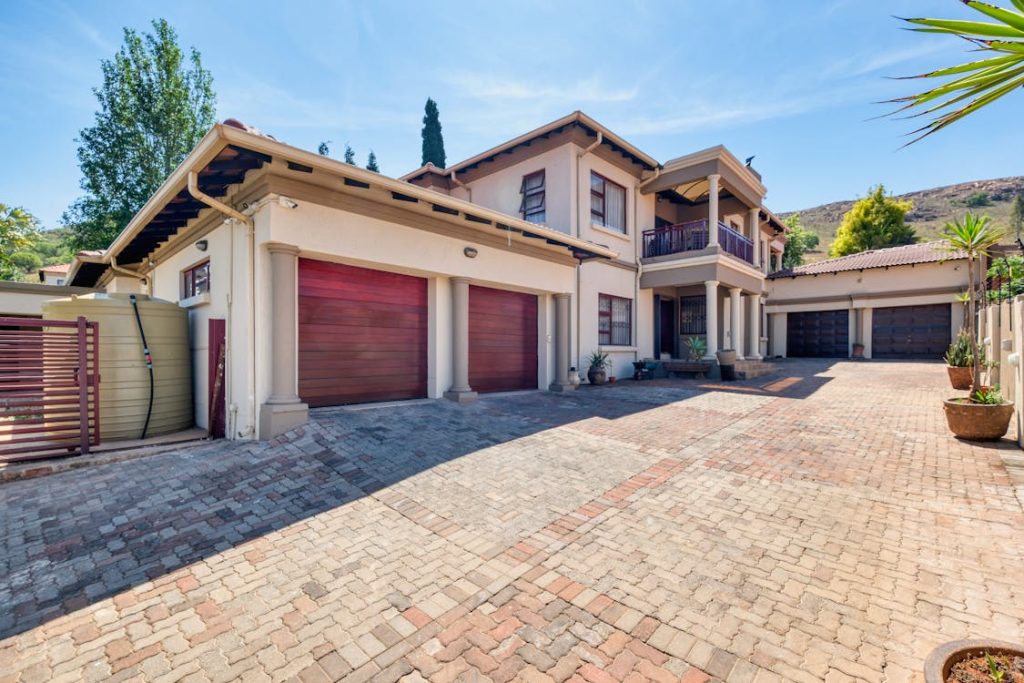Your garage door is not just a functional part of your home. It’s also an important component of your home’s curb appeal and overall aesthetic. What is the cost to replace your garage door. Choosing the right garage door that complements your home’s architecture, meets your functional needs, and fits your budget can be a daunting task. With so many styles, materials, and features available, it can be challenging to know where to start.
1. Material
The material of your garage door affects everything from its durability and maintenance requirements to its insulation and appearance. Is the cost to replace your garage door worth it? Here are the most common materials used for garage doors:
- Steel: Steel doors are one of the most popular choices for garage doors due to their durability, low-maintenance requirements, and affordability. They come in a variety of colors and can mimic the look of wood or other materials.
- Wood: If you’re looking for a classic, timeless look, wood doors are an excellent option. They offer a natural warmth and beauty that can’t be replicated by other materials. However, they require more maintenance than steel or other materials and are generally more expensive.
- Aluminum: Aluminum doors are lightweight, low-maintenance, and rust-resistant. They’re a great choice for modern homes and come in a variety of colors and finishes.
- Fiberglass: Fiberglass doors are a newer option that offers the look of wood with the low-maintenance requirements of steel. They’re highly durable and can withstand extreme weather conditions.
Consider factors such as durability, insulation, and aesthetics when choosing the right material for your garage door.
2. Style
The style of your garage door should complement your home’s architecture and enhance its curb appeal. Here are some common garage door styles:
- Traditional raised-panel doors: These are the most popular garage door style and are versatile enough to suit a wide range of home styles. They feature a series of rectangular panels with raised edges.
- Carriage-house doors: These doors mimic the look of old-fashioned carriage-house doors and feature decorative hardware and windows. They’re a great choice for homes with a rustic or traditional style.
- Modern flush-panel doors: These doors have a sleek, contemporary look and feature flat panels with no raised edges or decorative hardware. They’re a great choice for modern homes or homes with a minimalist aesthetic.
Consider the architectural style of your home when selecting a garage door to ensure it complements the overall design aesthetic. Choose a style that enhances the curb appeal of your home and reflects your personal taste.
3. Insulation
The level of insulation you need for your garage door depends on the climate in your area and your personal preferences. Here are some benefits of insulated garage doors:
- Temperature regulation: Insulated doors help regulate the temperature in your garage, which can prevent heat loss in the winter and keep your garage cooler in the summer.
- Energy efficiency: Insulated doors can help reduce energy costs by preventing heat loss and gain. This is especially important if your garage is attached to your home.
- Noise reduction: Insulated doors can help reduce noise from outside and prevent noise from your garage from disturbing your neighbors.
Look for doors with high R-values to maximize insulation and comfort.
4. Budget
Setting a budget for your garage door project is crucial. Garage doors are available at a range of price points, from affordable steel doors to high-end wooden doors. Investing in a quality door made from durable materials can save you money in the long run by reducing maintenance and energy costs.
Choosing the right garage door for your home involves considering several factors, including materials, style, insulation, and budget. By taking the time to research your options and weigh the pros and cons of each, you can find the perfect garage door to meet your needs and enhance the aesthetics of your home.







